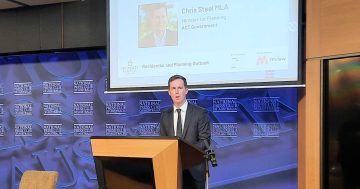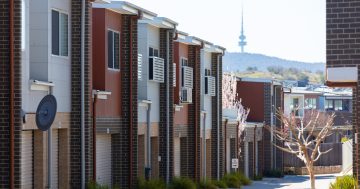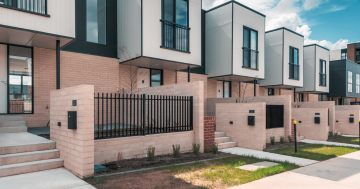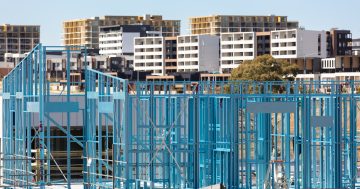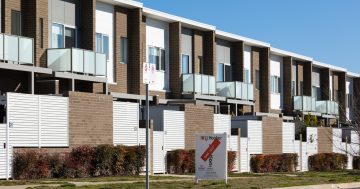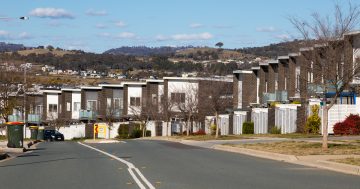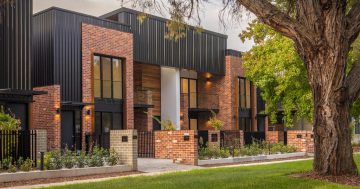
Planning Minister Chris Steel: “We’re interested in having that conversation about viability.” Photo: Master Builders.
Planning Minister Chris Steel is keeping his options open on tax relief and faster approvals to get ‘missing middle’ housing rolling in Canberra’s established suburbs.
In a speech and Q&A at a Master Builders event at the National Press Club, Mr Steel also indicated that he expects the outer suburbs of Belconnen, Weston Creek, Woden Valley and Tuggeranong to be where most of the low-rise apartments, townhouses and terraces will be built.
But he drew a line when it came to developer licensing, saying Canberra had a gutful of dodgy developments.
Asked if the government was contemplating reducing or dropping lease variation charges (LVC) that were hindering the viability of missing middle projects, Mr Steel said that no change was being proposed at present, but the government was aware that developers needed to make a profit.
“We’re interested in having that conversation about viability,” he said.
“We want to make sure that these reforms are implemented so that the sector actually takes them up and builds more homes.”
Mr Steel indicated one area the government could look at was how LVC was calculated, noting that there had been feedback that the current methodology did not support small projects.
However, site selection would also provide a way to pay less tax, given that the government believed there would be significant opportunities in the outer suburbs, where the cost of land would be lower, and therefore taxes would also be lower.

Mr Steel said he was closely watching reforms in NSW.
Faster approvals were also on the agenda, Mr Steel said, through streamlining assessments with a new City and Environment Directorate unit called Development Solutions, pre-approvals and exempt developments.
Mr Steel said the government was looking at developing a pattern book for developers based on the NSW model that would include pre-approved housing designs.
He said NSW reforms, which would allow some developments to be approved without an application, were also on the table.
“Something that we haven’t proposed yet, but we are certainly looking very closely at, is what NSW is doing, and we think that there could be a potential opportunity there for some of the lower-risk missing middle homes that are compliant with the technical specifications that we’ve outlined in the plan,” he said.
This exempt development would also circumvent third-party appeals, he said.
Industry has been calling for the government to extend its ban on third-party appeals for social and public housing to general housing.
Industry remains opposed to developer licences, but Mr Steel made it clear that the government would not be moved on this issue.
“Implementation of property developer licensing and building reforms are crucial to ensuring consumer protection and community acceptance as more homes are built,” he said.
“As I said at the Assembly estimates hearing last week, people have had a gutful of poor development in this city, and we just cannot put up with it any longer; we have to change what we’re doing.”
Mr Steel said he had doorknocked thousands of homes during the election campaign and found people who live in developments with substantial defects, and experienced a lot of financial stress as a result.
“We need to deal with that, and that means extending the chain of accountability to property developers,” he said.
The Property Council’s submission on the missing middle housing reforms highlighted LVC as a barrier to their success. It called for an LVC moratorium on missing middle typologies and for a review of how it was calculated.
It also wanted the government to review third-party appeal rights for missing middle housing.
The Property Council urged the government to set up a facility to keep track of the number of additional developments approved, commenced and completed because of the zoning changes.
It also recommended that the government collect and report more development data, such as dwelling size, number of bedrooms per dwelling and housing typology to better understand the mix of dwellings being approved and built in the Territory.












